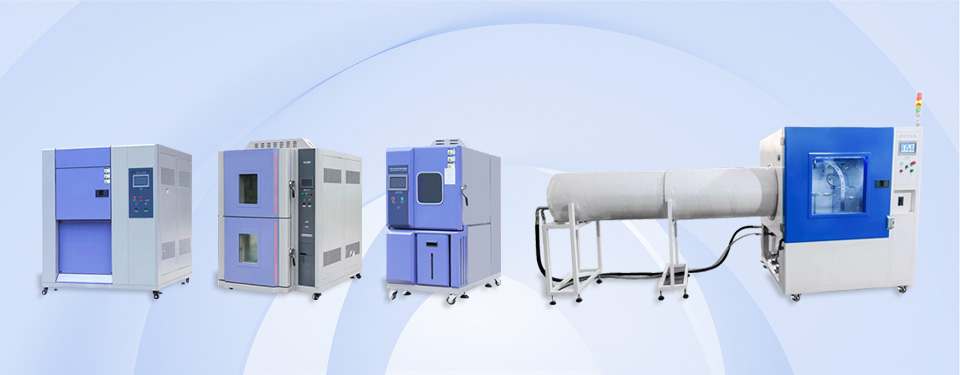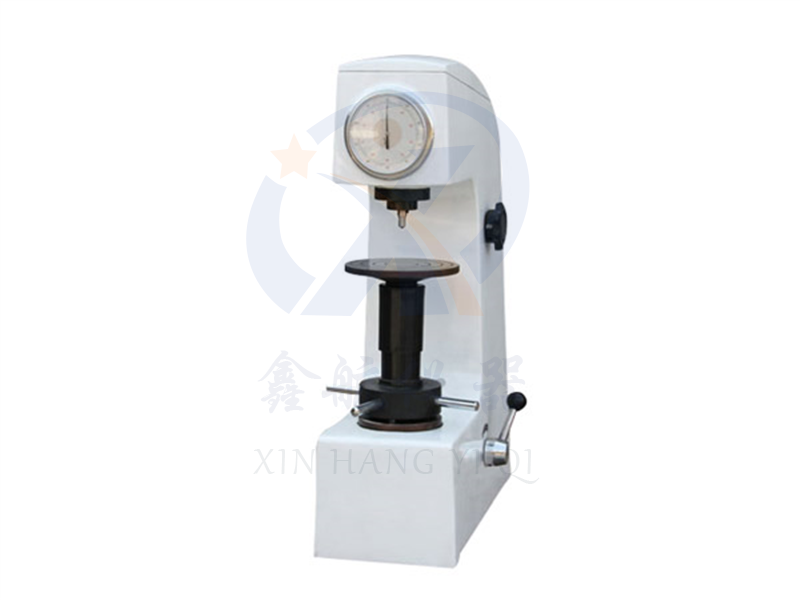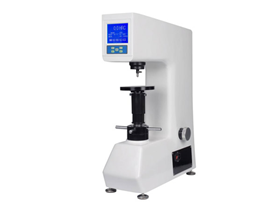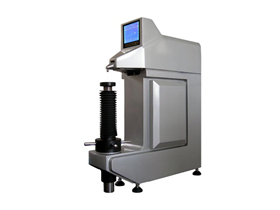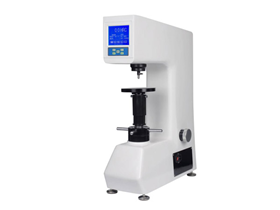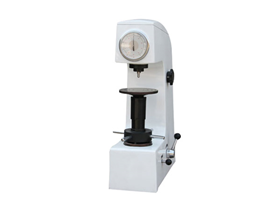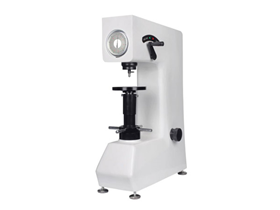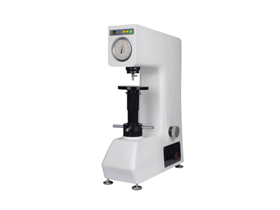Overview:
Integrated cast iron body, no deformation, no displacement, weight loading structure, stable performance, and high measurement accuracy. Direct dial reading, mechanical manual testing, no charging device, precise hydraulic buffer, adjustable speed, with good reliability, operability, and intuitiveness. Sturdy structure, good rigidity, and accuracy.
Main functions:
● lever loading, manual operation, reliable and durable; Friction free spindle with high precision in testing force;
● Direct reading on the dial, HRA, HRB, HRC, and optional Rockwell's other scales;
Precision hydraulic buffer with adjustable speed;
The accuracy complies with GB/T230.1-2018 Rockwell hardness test for metallic materials, ISO6508-2, and American ASTM E18 standards.
Application scope:
Measurement of black metals, non-ferrous metals, quenched and tempered steel, annealed steel, malleable castings, aluminum alloys, copper, bearing steel, etc.
technical data
|
model
|
HR-150A
|
|
Experimental force
|
60kgf (588.4N) 100kgf (980.7N) 150kgf (1471N)
|
|
Rockwell Scales
|
HRAHRBHRC
|
|
Hardness testing scope
|
20-95HRA,10-100HRBW,20-70HRC(The optional measurement range is10-70HRCCustomized diamond indenter)
|
|
Display method
|
Direct reading on the dial
|
|
Maximum height of the specimen
|
170mm
|
|
Pressure head to inner wall
|
135mm
|
|
External dimensions(mm)
|
466 * 238 * 630mm
|
|
Host weight
|
about65Kg
|
Roche test principle:
At the beginning of the experiment, the pressure head of the testing machine is placed on the specimen, an initial test force is applied, and a reference point measured by the displacement measurement device is established. Because the initial test force causes the indenter to press into the specimen, the smoothness or irregularity of the surface will not affect the test. Next, the testing machine applies the main test force, which is larger and enters the specimen deeper. Then, the main test force is removed while maintaining the initial test force. At this time, the testing machine measures the depth of the indentation relative to the established reference point. The straight-line depth of dents is the basis of Rockwell hardness values. A shallow indentation depth only indicates a higher material hardness, while a relatively deep indentation depth indicates a softer material hardness.

HRC A=100-n1-n0 0.002
HRB=130-n1-n0 0.002
In the formula: n0- the depth at which the indenter is pressed into the specimen under the initial test force F0
N1- The depth at which the indenter is pressed into the specimen while applying the total test force F and removing the main test force F1, while still maintaining the initial test force F0.
The hardness tester meets the standard:
GB/T 230.1-2018 Rockwell hardness test for metallic materials Part 1 Test method
GB/T 230.2-2012 "Rockwell hardness test for metallic materials - Part 2: Verification and calibration of hardness testers" National standard
JJG 112-2013_ Verification Regulations for Metal Rockwell Hardness Testers (A, B, C, D, E, F, G, H, K, N,/T Scales)
ASTM E18-2015 Standard Test Method for Rockwell Hardness of Metallic Materials
ASTM Standard - Metal Test Methods and Analysis Procedures
Standard configuration
|
name
|
quantity
|
name
|
quantity
|
|
Diamond Rockwell indenter
|
1only
|
φ1.5875mmBall pressure head
|
1only
|
|
φ1.5875mmsteel ball
|
5only
|
Rockwell hardness standard block
|
common3block
|
|
Product User Manual
|
1book
|
Large, mediumVType test bench
|
various1only
|
|
Product Qualification Certificate
|
1share
|
|
|



